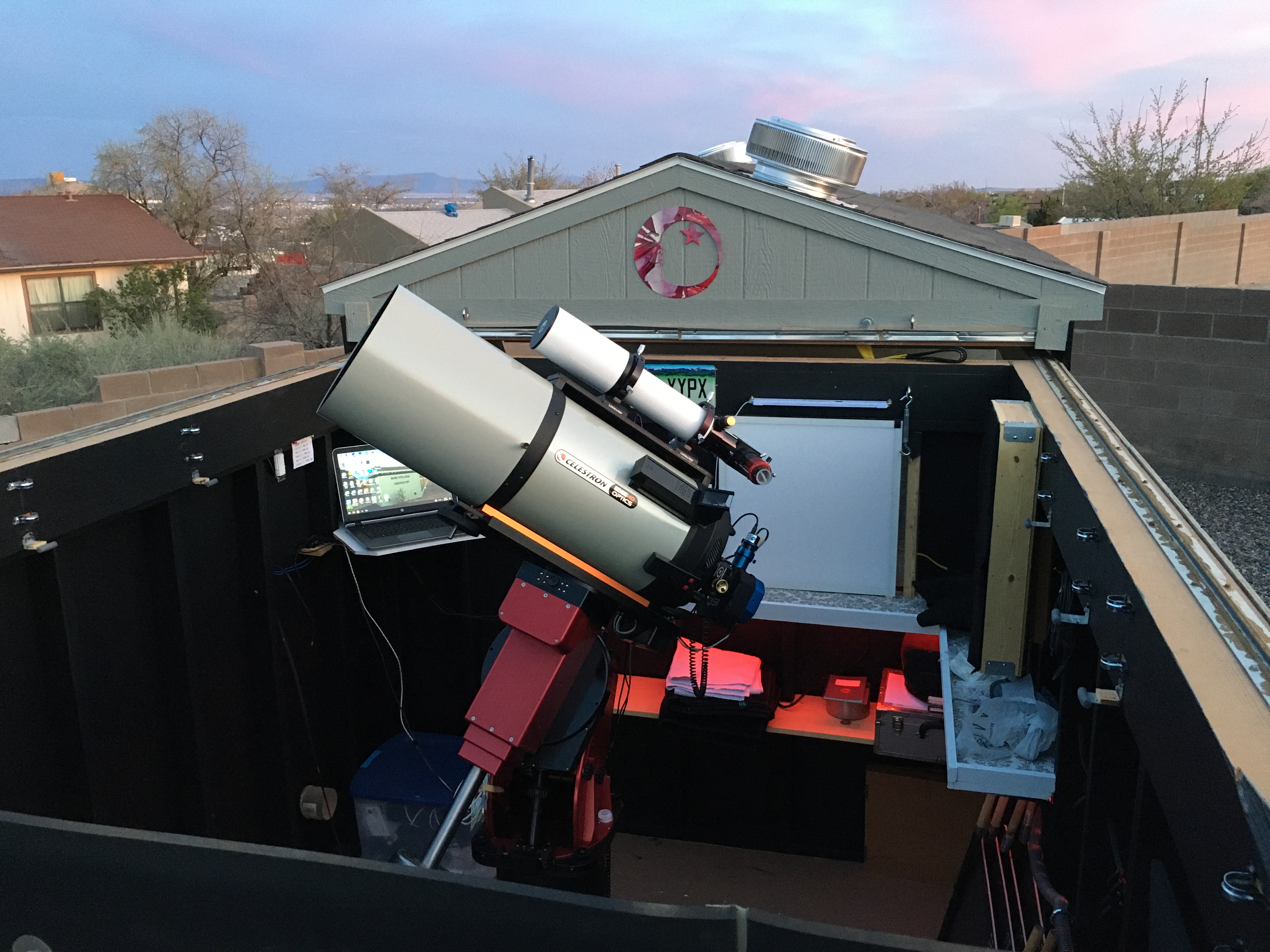Yeah, tell me about that recent snowstorm. I ended up with 20 inches of heavy, wet snow that damaged every tree and bush on my property here in eastern NY state. After it was over, I got a completely clear night, but there was an avalanche hanging over my patio that would have destroyed my rig if it came down. Then I got a nasty head cold and didn't want to image. Welcome to upstate NY in the winter. Next time I get 20 inches, let it be a Planewave CDK! Please!
I formerly lived in west Texas (Lubbock area), and I have made many dark site trips from that location, including three to New Mexico. I would vastly prefer southern New Mexico due to the low particle (dust) count in the air and the much lower frequency of windy days. In west Texas, August through October was best. November-January mostly turned out to have wickedly bad seeing and some wind. February through April was another "primetime" season if the wind behaved itself, but it often did not. On a windy day, the sky turns brown, and my images would be affected badly, even if the wind calmed down before sunset. May was a good month unless there were thunderstorms. Late May into June was the cloudiest time of the year. Sometimes forest fire smoke ruined imaging all summer long, just like anywhere else in the country. As you can see, west Texas is hardly a year-round picnic, because many of the nights that look clear on a satellite image are actually poor for imaging.
In New Mexico, gusty wind and brown skies are much less likely than on the southern plains, but windy days do happen. I'm not sure about going further south in Texas - perhaps the wind/dust problem is less severe around Fort Davis or Big Bend? The trouble with Big Bend is that's there's essentially no civilization nearby, so good luck living there. Avoid the Permian Basin (Midland/Odessa/Carlsbad) because the oil/gas industry has so many flares that the skies are not actually very dark.
My three trips to New Mexico were just astonishing. Nowhere in west Texas could compare to the darkness and transparency I experienced at 7500 ft. elevation in southern NM. The trouble was that I had average seeing on one night, and poor seeing on two nights, so the images I recorded were worse than what I could have gotten at home in TX. Local topography is a really big deal in mountainous areas, and setting up downwind of a mountain range is lethal. Mixing of warm desert air with cold air descending from the mountains is a recipe for poor seeing. In the summer, afternoon thunderstorms form over the mountains, ruining virtually every night for imaging if you happen to be downwind. Even when the clouds finally clear out, the seeing is terrible due to convection overhead.
Overall, my advice would be to find a location in NM that has somewhat flat land to the west and southwest of it. The prevailing winds are from the southwest, so you'll get a nice, stable layer of air flowing over your location. Combine good seeing with ridiculous numbers of clear nights, even in the winter, and you'll move back to the northeast in 5 years after running out of DSOs to image.

